How to Test for Lead and Other Contaminants in Drinking Water
Posted by Kenton Jones on Nov 27th 2018
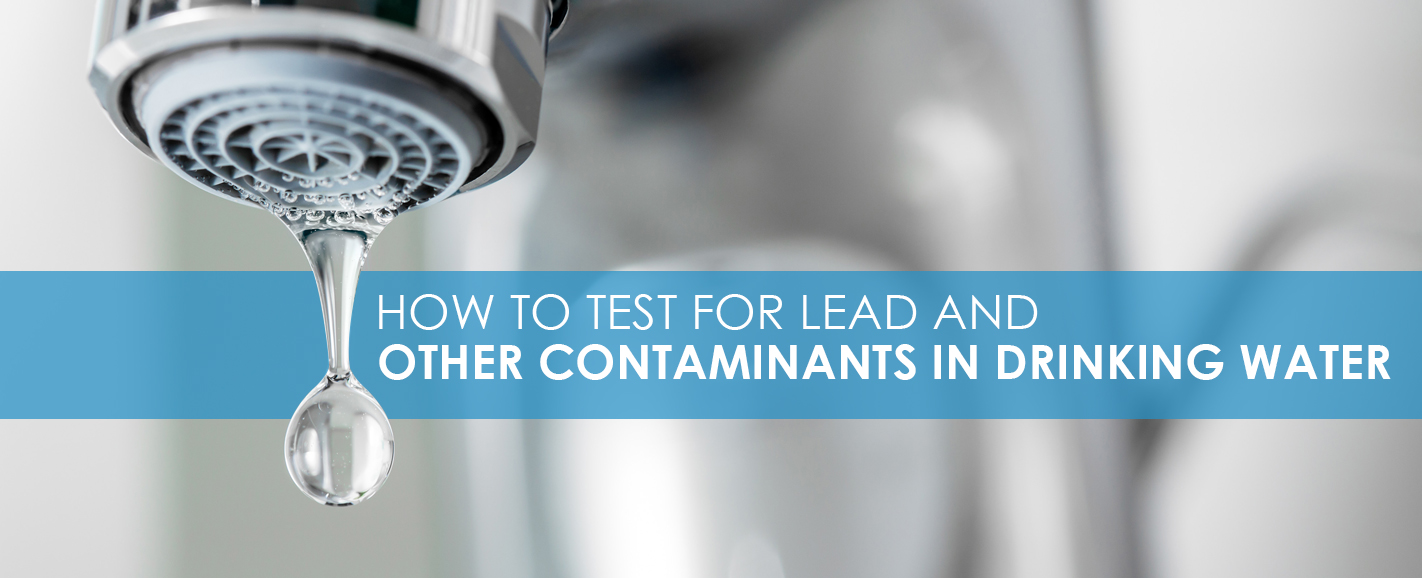
Drinking water can come from many different places. The primary sources of the water that goes through the pipes of your home most commonly derive from two main sources. Groundwater from underneath the Earth's surface comes from aquifers, which are rocks with pores, voids and cracks that store and transmit water. Surface water is more straightforward — it comes from bodies of water such as freshwater lakes, rivers, and reservoirs.
No matter which source your area uses for drinking water, contaminants can infiltrate the drinking water supply and harm an individual's health.
In one instance in Maryland, Montgomery County discovered that high levels of lead were found in over 200 school drinking fountains and taps. They knew they had a big problem on their hands. Lead is particularly harmful to children and can cause learning disabilities, behavioral issues, and other long-term effects.
Officials began to address the problem by immediately taking the lead-afflicted taps offline. Then, they began implementing other remediation measures but were facing the challenge of identifying how many children were significantly affected and to what extent.
Many authorities disagree on safe levels of any given chemical in drinking water, however the Environmental Protection Agency (EPA) does establish enforceable limits of contaminants. Different local and state governments have different guidelines and procedures for maintaining or increasing the safety of public drinking water.
These incidents and inconsistencies amongst regulations leave ordinary people wondering what they can do to check the quality of their water. You can ensure the drinking water in your home is safe by doing the testing yourself. You don't have to be a scientist to conduct tests and interpret the results, but water testing is often overlooked by homeowners across the country.
The Importance of Testing Your Water Quality for Contaminants
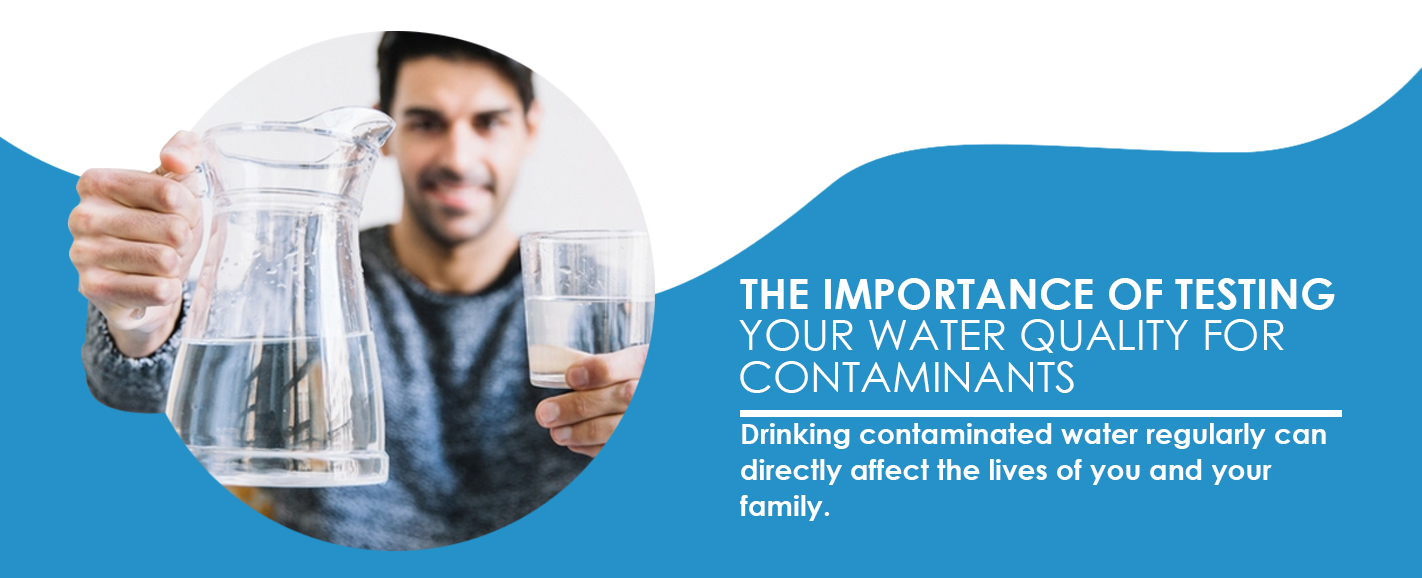
Drinking contaminated water regularly can directly affect the lives of you and your family. Illnesses commonly stem from drinking water contamination and can lead to serious side effects. Less seriously, taste, color, and odors are noticeable when levels of minerals or other benign contaminants found in your water aren't quite right.
Testing your water periodically is a simple yet often neglected task to perform. You should check your well water:
- At least once every year for coliform, nitrates, pH levels, and total dissolved solids.
- Every three years for chloride, manganese, iron, sulfate, hardness, and corrosion. If you notice differences in taste, odor, or stained appliances and laundry, test for these contaminants first.
- If you get a new well or have replaced components within your water system.
- For nitrate during pregnancy, before bringing an infant home, and once more after six months. The spring or summer is the best time to test for nitrate, especially after a period of rain.
Also, you should test your tap water, whether it comes from a well or municipal supply:
- If unexplained illnesses start occurring in your family.
- If there has been a chemical spill, gas drilling, or mining operation near your area.
Following this schedule will ensure your drinking water is safest year round.
If you are amongst the 13 million households in the United States that use private wells for their drinking water, the EPA does not regulate them or provide reports for the standards of your well. That means you alone are responsible for the safety of your water. Studies have shown that half of the private well owners have never been tested and fail in at least one drinking water standard.
Even if you do use public water and receive an annual report from your city or country telling you that your water is safe, you may want to take these letters with a bit of skepticism. While the reports often account for hundreds or even thousands of test results, the tests are representative of a community-wide picture but do not reflect the conditions at a specific household faucet.
Common Water Contaminants
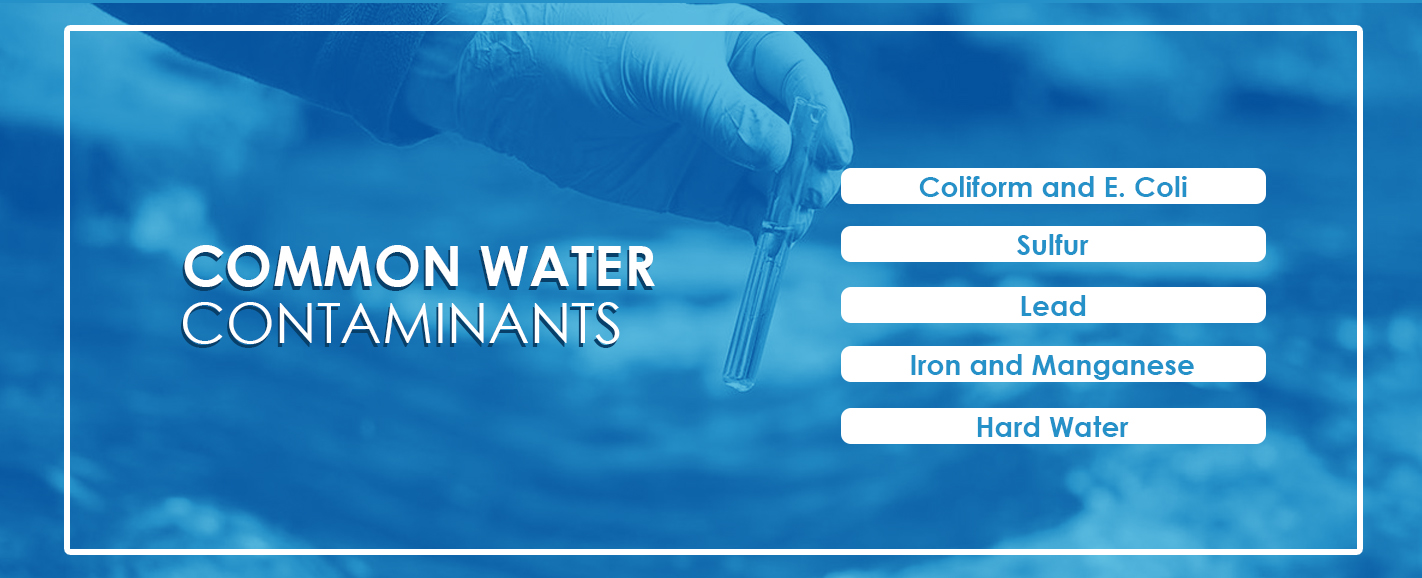
The first thing you should know about how to test drinking water quality is that it is not a one-dimensional test. You must have an idea of what contaminants you suspect may be infiltrating your water supply. Smell, taste, and appearance may play a role in determining whether your water is within safe levels for various minerals and chemicals and is good for consumption.
If your water smells like bleach, this is probably due to the chlorine treatment plants add to kill more dangerous bacteria. Musty or earthy smells mean organic matter is decaying but is harmless. You can use a home water filter, such as a Multipure, to combat these unwanted tastes or smells.
Saltiness indicates the presence of chloride. Low pH levels cause water to take on a metallic taste. Besides these common differences in taste and smell, other disease-causing agents have unique properties that allow them to be easier to identify.
1. Coliform and E. Coli
Disease-causing bacteria can contaminate water supplies most problematically through contact with fecal matter. Coliform is present in living warm-blooded animals and alone is not likely to cause illness. But, finding excess amounts of coliform in your water does indicate that other pathogens are possibly in there as well. By testing for coliform, you can save money by avoiding conducting more complicated and expensive tests, and know whether your drinking water is safe or not based on coliform levels.
Fecal coliform can contain E. coli, a potentially dangerous subgroup of coliform that can cause illness. Presence of E. coli is an even greater indication that your water is contaminated with harmful disease-causing agents and action is required.
2. Sulfur
If your water smells horrible, often like rotten eggs, then high amounts of hydrogen sulfide or sulfur may be in your water. Sulfur build-up occurs naturally but may spike if bacteria enters your system. Sulfur isn't the most dangerous risk to your health, but excessive amounts can cause diarrhea which leads to dehydration.
3. Lead
Lead in water often comes from lead pipes or leaded solder in old brass fittings and fixtures used in plumbing systems. Lead is a neurotoxin and is amongst the most dangerous contaminants to drink.
Older homes have more frequent issues with lead contaminants because the solder used to join together copper fixtures often contained lead until 1986 when the Safe Drinking Water Act Amendments banned using lead solder in drinking water plumbing. If your home was built before 1986 and you have never checked your water quality, you could be at an increased risk of consuming lead-contaminated drinking water.
4. Iron and Manganese
Iron or manganese may be the culprit if your water tastes bitter. While iron and manganese aren't naturally harmful, they can cause deterioration of fixture components and stain clothes put through the laundry. Iron turns water to a yellow or orange hue, while manganese produces a purple or black color.
5. Hard Water
Hard water is when mineral build-up occurs in water pipes and heating systems. The build-up can contribute to bacterial growth, affect taste, increase the rate of soap scum buildup, decrease water pressure, or negatively impact laundry.
How to Test Your Drinking Water Quality for Lead and Other Contaminants
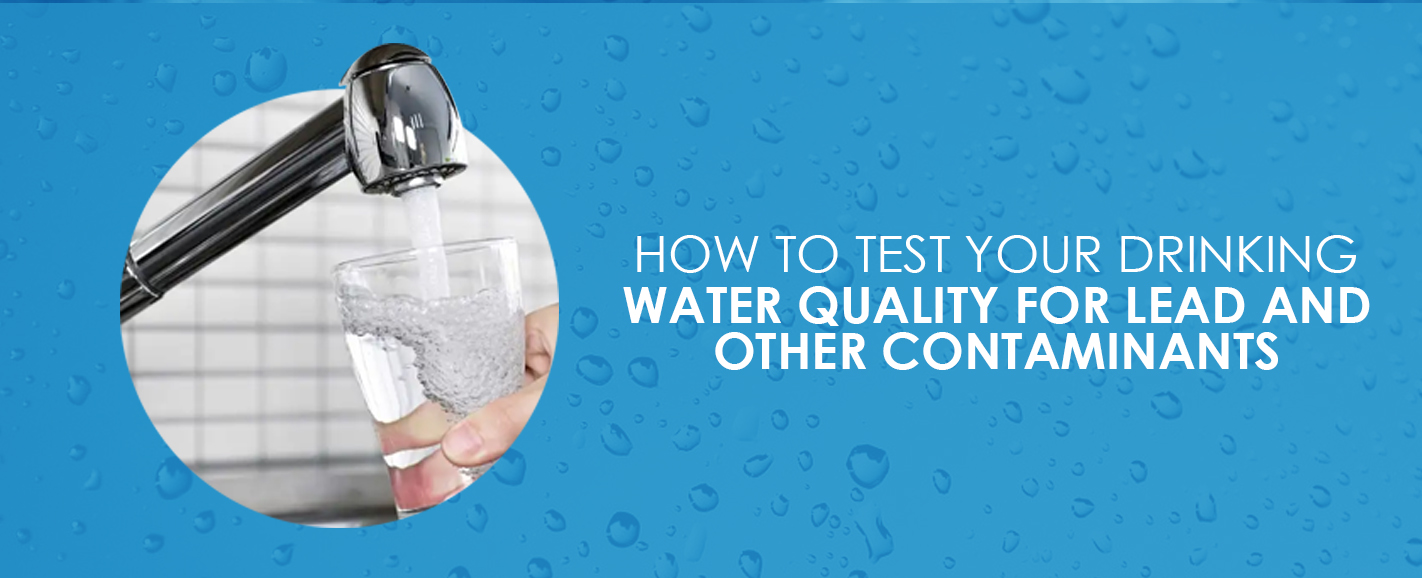
You are responsible for keeping your drinking water safe. It is up to you to be competent in testing your water, preventing drinking water pollution and knowing how to respond to signs of contamination. To save on the costs of some of the more expensive contaminant tests, make sure you take the time to do research or seek an expert on what contaminants are suspected in your area. Using a state certified laboratory or knowing how to perform drinking water testing on your own can yield considerable savings and peace of mind.
No matter whether you are collecting a sample to be tested in a lab or collecting it for your use, be sure to use an adequately sanitized container. Used food or drink containers produce inaccurate results. Testing labs often supply containers that posses stabilizing compounds that prevent loss or breakdown of certain chemicals that can dissipate when left out.
1. DIY Water Testing
Testing drinking water yourself can be much more cost-effective and convenient for the average homeowner. Drinking water test kits are available at almost any hardware store. These kits clearly illustrate what they are capable of testing for and are relatively inexpensive. They are useful for establishing a baseline for what might be in your water but aren't accurate enough to assure total purity.
Some contaminants can be identified immediately, while others may need up to 48 hours to register and produce accurate results. At-home tests include different vials for each test. Just fill up each vial to its indicated amount, tightly secure the cap, and leave the container for the stated amount of time for each test. Different colors indicate positive or negative results. Sometimes a test may begin by immediately turning the "safe" color, but after the recommended time of reaction, the color will change if the water is contaminated.
Other tests may require the use of a pipet to get a smaller amount of the water sample and use testing strips to determine if particular contaminants are present. The testing kit will come with a guide to specifying the levels of each pollutant, and the color produced by the testing strip indicates how much is present in your water sample.
Water filtration systems provide better tasting drinking water by reducing the trace amount of contaminants found in your water supply. The systems are usually easy to install and further protect against any substances that may be harmful to your health in your water supply. A water filter is an added measure to more actively protect against contaminants. Purchasing a filtration system should be seen as an investment to helping assure your tap water is safe to drink and is far more economical than continuously purchasing bottled water.
Treatment equipment such as water filtration systems will influence the results of your tests. If you want to know raw tap water quality as it emerges from the well or city, collect your sample from the spigot on your at-home water tank instead of from the kitchen faucet. Doing this will allow you to take a look into how your water arrives before any water treatment equipment and plumbing plays any role.
2. Professional Testing Services
Although at-home water testing can provide insight into the quality of your water, it generally cannot compare with the accuracy of a professional laboratory. Water testing laboratories use advanced equipment and strategies to obtain a more accurate reading of your water supply and can produce exact results.
Laboratories are also the better option if you aren't sure how to identify what contaminants you think you are experiencing. Local water testing service labs can be found in almost any large community and will be able to take your concerns and give you recommendations based on their experience of the water in the area. They should be accessible by searching "nearby water testing labs" online, but you might find even more throughout your town by calling your local water authorities.
Some pollutants have no obvious symptoms or noticeable traits and can only be detected through laboratory testing. If you know that your area is prone to having issues with certain contaminants that cannot otherwise be seen, choosing a water testing laboratory is a good decision.
If you decide testing drinking water at home is not enough, it is essential to select a certified water testing laboratory. Uncertified labs or treatment labs promoted by salespeople can produce skewed or inaccurate results, and you would be better off finding a certified lab.
If you have identified the issue and need more information on how to proceed, verify your findings with water testing professionals that will help ensure you have formed the right conclusions, and give you recommendations on how to proceed.
Multipure's Cutting-Edge Water Filters and Purifiers
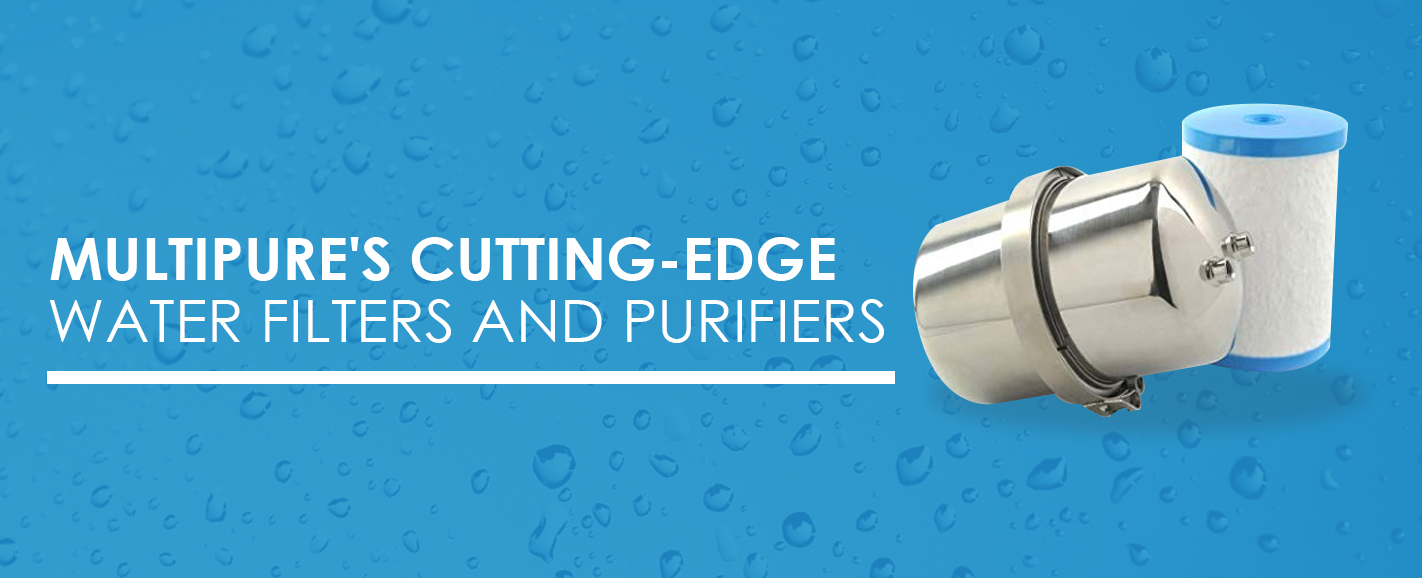
People should test and filter their water for two main reasons — to protect themselves from harmful contaminants and to improve the aesthetics of their drinking water.
Multipure provides many options to promote better water, health, and overall well-being. We are the premier manufacturer of high-quality drinking water systems, filters, and purifiers. Our innovative water filtration technology allows for an excellent analysis of contaminants and insight on how to obtain the best drinking water possible for your specific area.
Almost 50 years of research, development, and manufacturing expertise have led us to develop the best drinking water treatment devices in the industry. We've concluded that solid carbon block filters are the most effective for reducing the largest range of contaminants from any source. Carbon-based water filtration systems provide distinct performance advantages compared to more traditional methods.
These advantages include:
- Greater chemical absorption and mechanical filtration
- Longer water contact time to adsorb problematic pesticides, herbicides, and heavy metals.
- Better protection against clogging due to pre-filters that remove large particles
Solid carbon block filters cover a broad spectrum of contaminants including more than 65 problematic agents. These benefits make carbon block the choice technology by consumers throughout the country for protecting their water supply from unwanted chemicals, toxins, and pathogens.
Other products offered by Multipure include home essentials that provide healthier water for different facets of your home including your bathwater and yard, as well as portable water bottles for filtration on the go. Emergency water filtration systems are also available for when municipal water is not available.
Find out more about Multipure Drinking Water Systems today.

